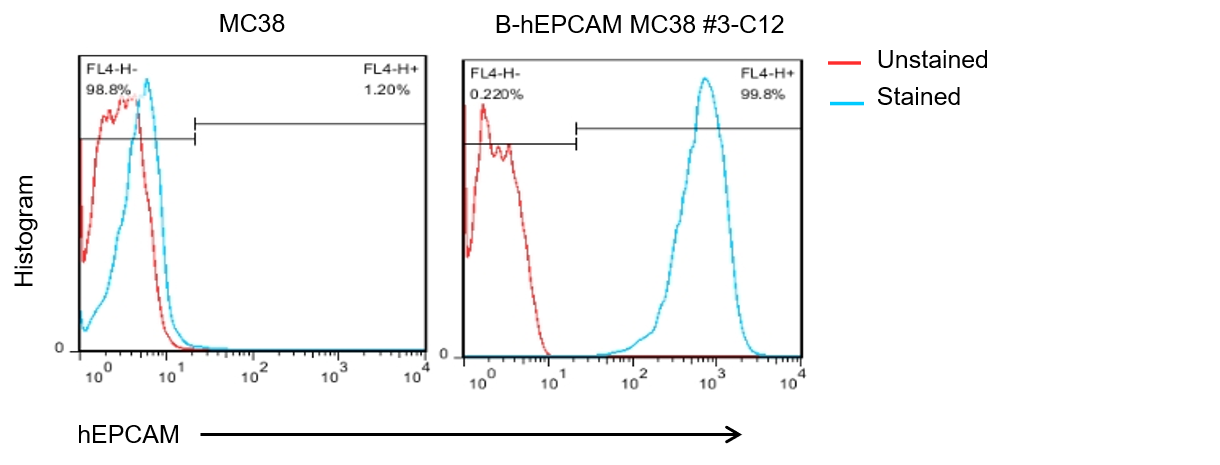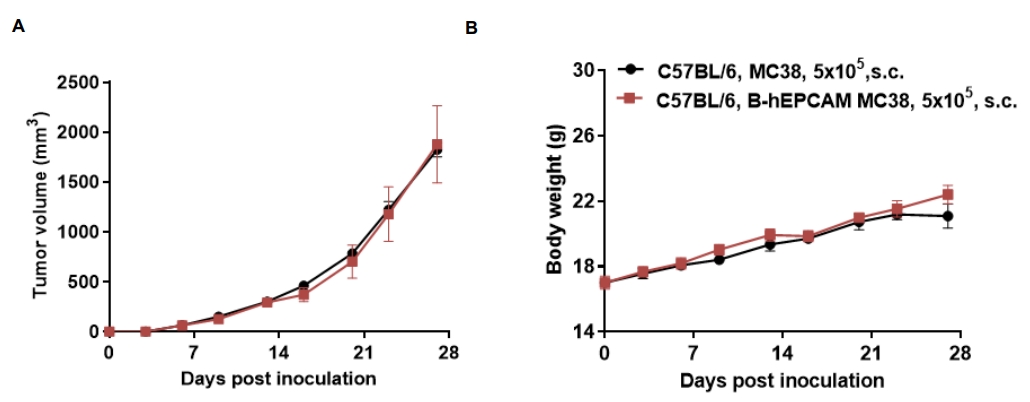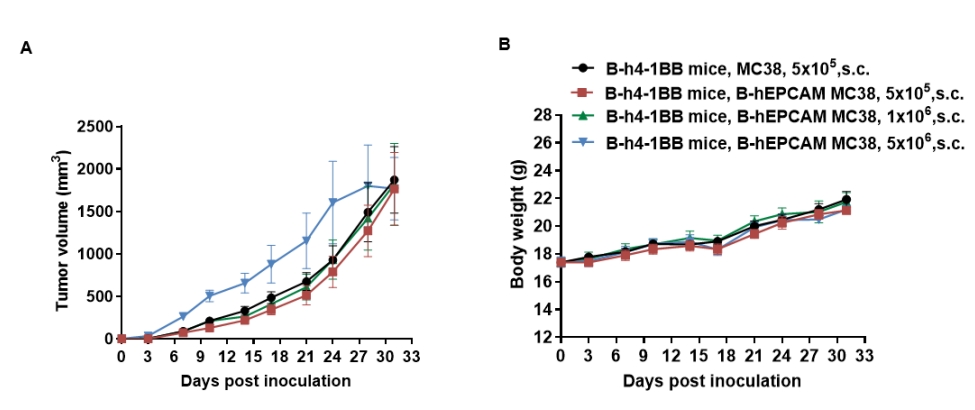Basic Information
Description
The mouse Epcam gene was replaced by human EPCAM coding sequence in B-hEPCAM MC38 cells. Human EPCAM is highly expressed on the surface of B-hEPCAM MC38 cells.
-
Targeting strategy

-
The exogenous promoter and human EPCAM coding sequence was inserted to replace part of murine exon 4 and all of exons 5~7. The insertion disrupts the endogenous murine Epcam gene, resulting in a non-functional transcript.
-
Protein expression analysis

-

EPCAM expression analysis in B-hEPCAM MC38 cells by flow cytometry. Single cell suspensions from wild-type MC38 and B-hEPCAM MC38 cultures were stained with species-specific anti-EPCAM antibody. Human EPCAM was detected on the surface of B-hEPCAM MC38 cells but not wild-type MC38 cells. The 3-C12 clone of B-hEPCAM MC38 cells was used for in vivo experiments.
-
Tumor growth curve & Body weight changes

-

Subcutaneous homograft tumor growth of B-hEPCAM MC38 cells. B-hEPCAM MC38 cells (5×105) and wild-type MC38 cells (5×105) were subcutaneously implanted into C57BL/6 mice (female, 5-8-week-old, n=5). Tumor volume and body weight were measured twice a week. (A) Average tumor volume ± SEM. (B) Body weight (Mean± SEM). Volume was expressed in mm3 using the formula: V=0.5 X long diameter X short diameter2. As shown in panel A, B-hEPCAM MC38 cells were able to establish tumors in vivo and can be used for efficacy studies.

Subcutaneous homograft tumor growth of B-hEPCAM MC38 cells. B-hEPCAM MC38 cells (5×105, 1×106, 5×106) and wild-type MC38 cells (5×105) were subcutaneously implanted into B-hCD3E mice (female, 8-week-old, n=6). Tumor volume and body weight were measured twice a week. (A) Average tumor volume ± SEM. (B) Body weight (Mean± SEM). Volume was expressed in mm3 using the formula: V=0.5 X long diameter X short diameter2. As shown in panel A, B-hEPCAM MC38 cells were able to establish tumors in vivo and can be used for efficacy studies.

Subcutaneous homograft tumor growth of B-hEPCAM MC38 cells. B-hEPCAM MC38 cells and wild-type MC38 cells were subcutaneously implanted into B-h4-1BB mice (female, 8-week-old, n=6). Tumor volume and body weight were measured twice a week. (A) Average tumor volume. (B) Body weight. Volume was expressed in mm3 using the formula: V=0.5 X long diameter X short diameter2. As shown in panel A, BhEPCAM MC38 cells were able to establish tumors in vivo and can be used for efficacy studies. Values are expressed as mean ± SEM.


